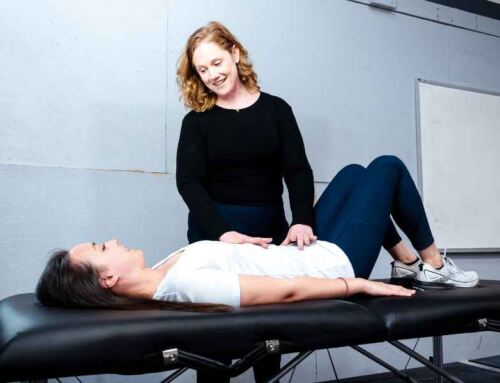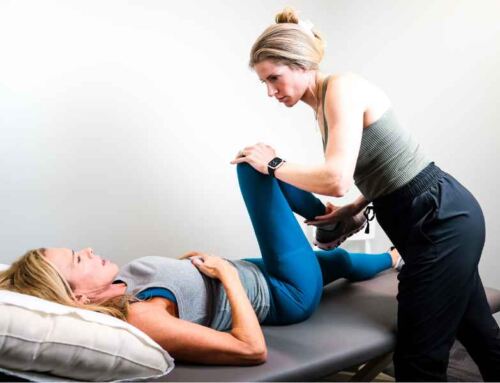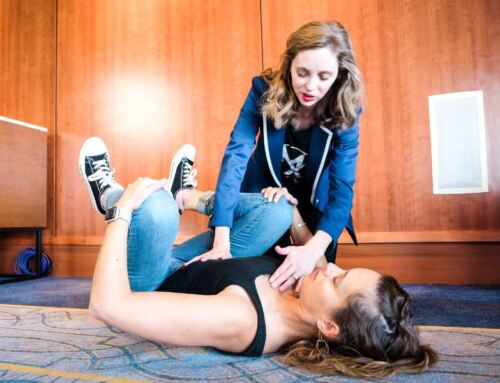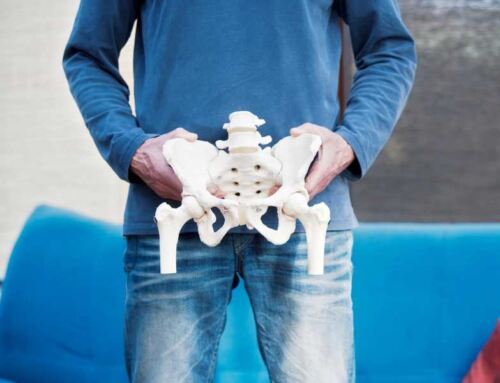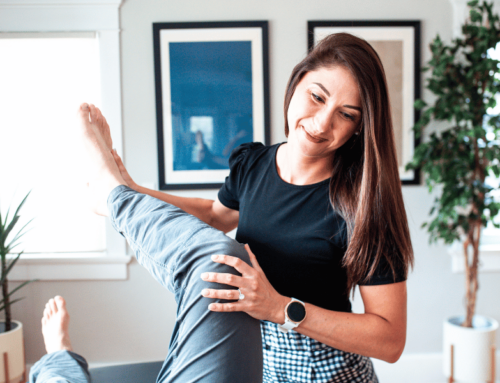The Top 3 Ways to Strengthen Your Hips During Pregnancy
Pregnancy often gets described akin to running a marathon. But you wouldn’t run a marathon without training, would you?
To prepare you for both the physical changes you endure during pregnancy as well as the demands of postpartum life, we recommend prioritizing building strength in your hips.
Why Strengthen the Hips During Pregnancy?
For starters, exercise has a wealth of benefits for both you and your baby during pregnancy. Hip strengthening in particular can prepare you for a couple of different things…
Postural Changes in Pregnancy
As the uterus grows, the pelvis tilts forward, the hips externally rotate, and your gait adopts that classic waddle. All of this can change the way your muscles can stabilize the pelvis. Strengthening the gluteal muscles in your hips can build stability and strength across the pelvis and oppose the weight of your growing belly.
Postpartum Strength
Kids are heavy. Kid’s stuff is heavy (who knew a newborn + a car seat could weigh over 20lbs?). On top of that, you are carrying them ALL of the time. Postpartum is a very physically demanding time and we need to be training for it like a sporting event.
Maintains SI Joint Alignment
Weak gluteal muscles are associated with SI joint dysfunction, so keeping yours strong can help to keep your pelvis stable.
How Can I Strengthen My Hips?

Side Planks
- How: Begin by lying on your side. Bring your elbow underneath your shoulder. Tighten your core, thighs, and buttocks and lift your side off the mat using your forearm. Hold this position, starting with 30 seconds each side or whenever you start to fatigue.
- Why: This exercise will strengthen your gluteus medius and abdominal obliques.
- Modification: If performing a regular side plank feels like too much, try elevating the surface with your elbow propped on the edge of the couch or wall. The more vertical you are, the easier it will be, and the more horizontal you are, the harder it will be.

Goblet Squats
How: Start with your feet a little wider than shoulder-width apart while holding a dumbbell with both hands at your chest level. Next, squat down while holding the dumbbell at your chest the entire time, hinging at the hips and keeping your chest upright. Press through your heels and stand back up by straightening your knees. Keep the weight back through your heels. Repeat 8-10 times.
- Why: This exercise strengthens your gluteus maximus and quadriceps muscles.
- Modification: perform a bodyweight squat without a weight, or a sit to stand from a chair.

Deadlifts
- How: Use a box, full laundry basket, kettlebell, set of dumbbells, or a barbell as shown above. Hinge through your hips and send your bottom backwards like you’re closing a car door, with your shoulders over the object you’re about to lift and the arms straight down. Grasp the object. Keeping the back straight, hinge upright, then bring the object back down to the floor. Repeat 8-10 times.
- Why: This strengthens your gluteus maximus, hamstrings, and is arguably the most functional lift for aaallll the baby stuff.
- Modification: Perform without weight, or lift from an elevated surface instead of the floor.

Lateral Lunges
- How: Stand with your feet shoulder-width apart. Hold a dumbbell with both hands at your chest level, like a goblet squat. Next, take a big step to the side and bend your knee to a lunge position. As your knee bends, lower your buttocks down towards the floor. Return to a standing position pressing through your heel and repeat on the same side, 6-8 times on each leg.
- Why: This strengthens your gluteus medius muscle on both sides and improves single leg balance.
- Modification: Perform without weight or take a smaller step to the side.
These exercises can help to build strength in the hips, but they’re really just the beginning. An individualized assessment with a physical therapist who specializes in women’s health can help tailor a program specific to your needs.
Don’t hesitate to book an appointment with one of our physical therapy specialists to solidify a plan to help you move well, live well, and meet your goals.
References
- MassoudArab A, RezaNourbakhsh M, Mohammadifar A. The relationship between hamstring length and gluteal muscle strength in individuals with sacroiliac joint dysfunction. Journal of Manual & Manipulative Therapy. 2011;19(1):5-10. doi:10.1179/106698110×12804993426848
About the Author
Dr. Molly Morgan is a physical therapist and pelvic health specialist with MovementX in Portland, OR. She believes that it’s imperative to have a strong, functional foundation in the pelvic floor. Molly Morgan is passionate about treating a variety of pelvic floor conditions, lumbosacral dysfunctions, and hip pain. She is committed to providing one on one care to meet you needs and work towards your goals.



